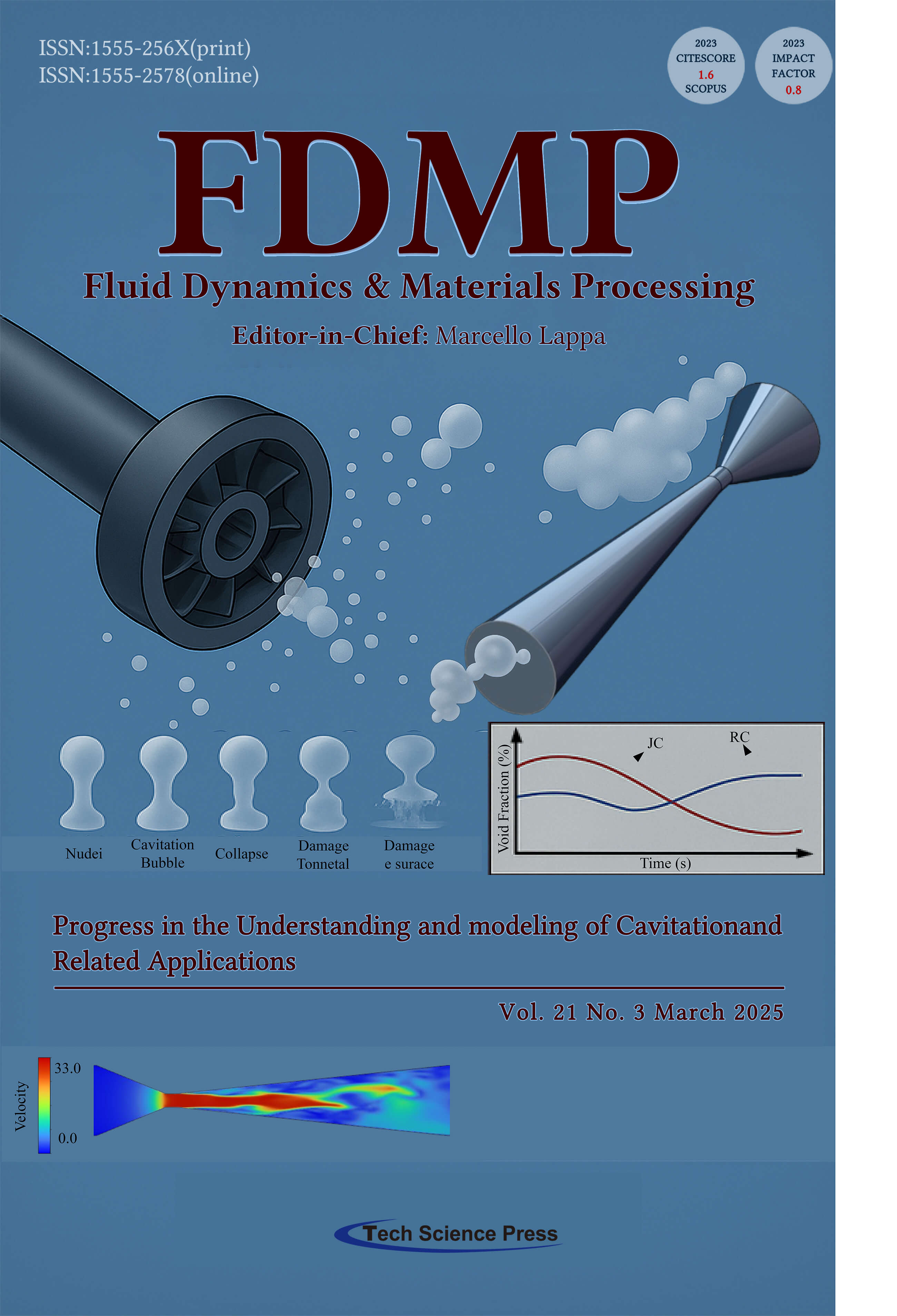
This study provides a comprehensive review of the mechanisms and structural evolution of hydraulic cavitation, with a particular focus on the flow characteristics and performance differences between Rotational Cavitators (RC) and Venturi Cavitators (VC). The cover illustration features a representative rotor-stator cavitator and a three-stage Venturi geometry, alongside a schematic of cavitation bubble evolution—from nuclei formation and bubble expansion to collapse and surface damage. The comparative graph in the lower right corner highlights the temporal variation of void fraction, illustrating the distinct cavitation dynamics of RC and JC under typical operating conditions. Additionally, the lower CFD-based velocity contour visualizes the internal flow acceleration and vortex structures within the Venturi cavitator, driven by high-pressure gradients. Overall, the design reflects recent advances in multi-structure cavitation modeling, mechanism analysis, and control optimization.
View this paper